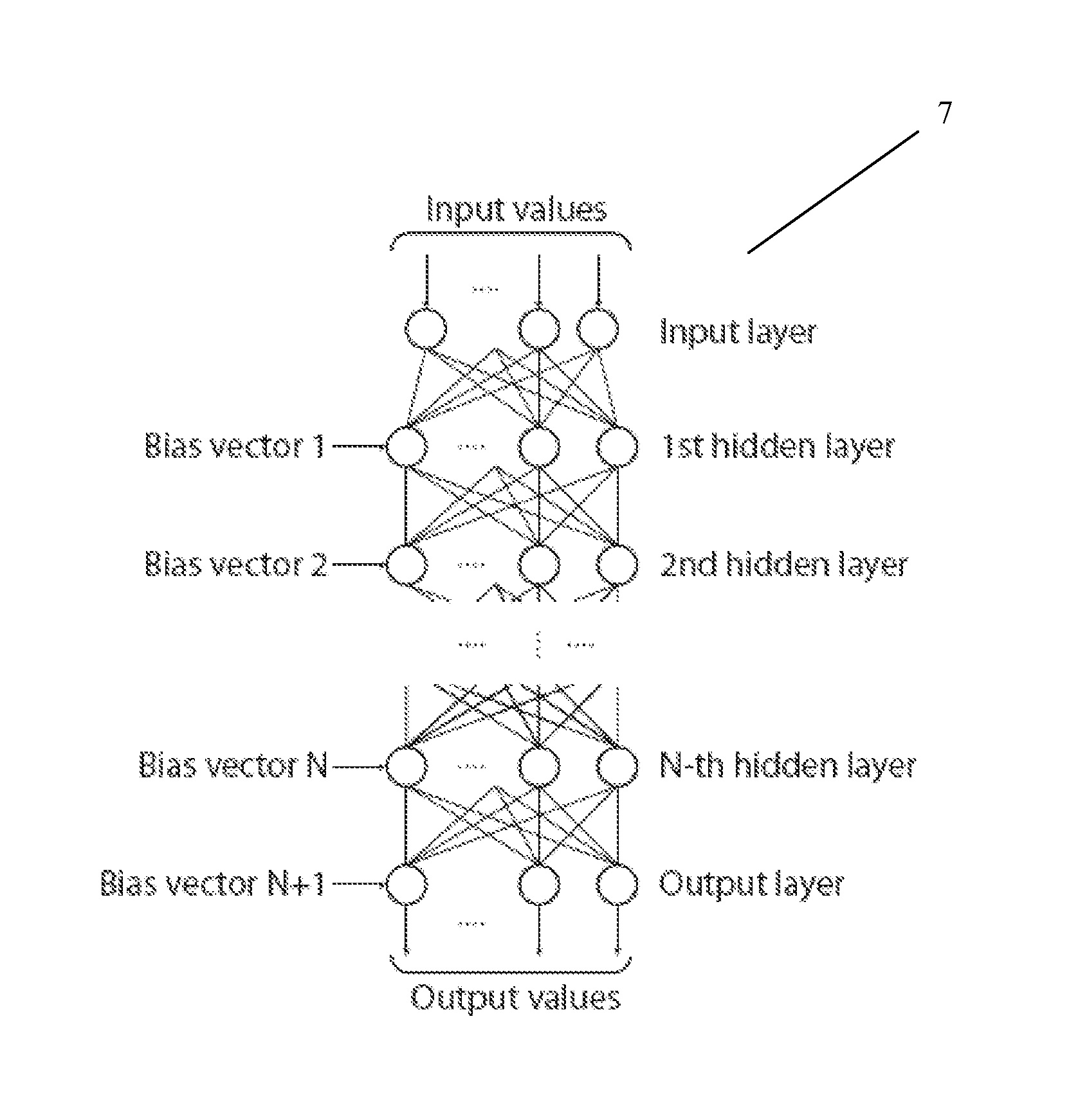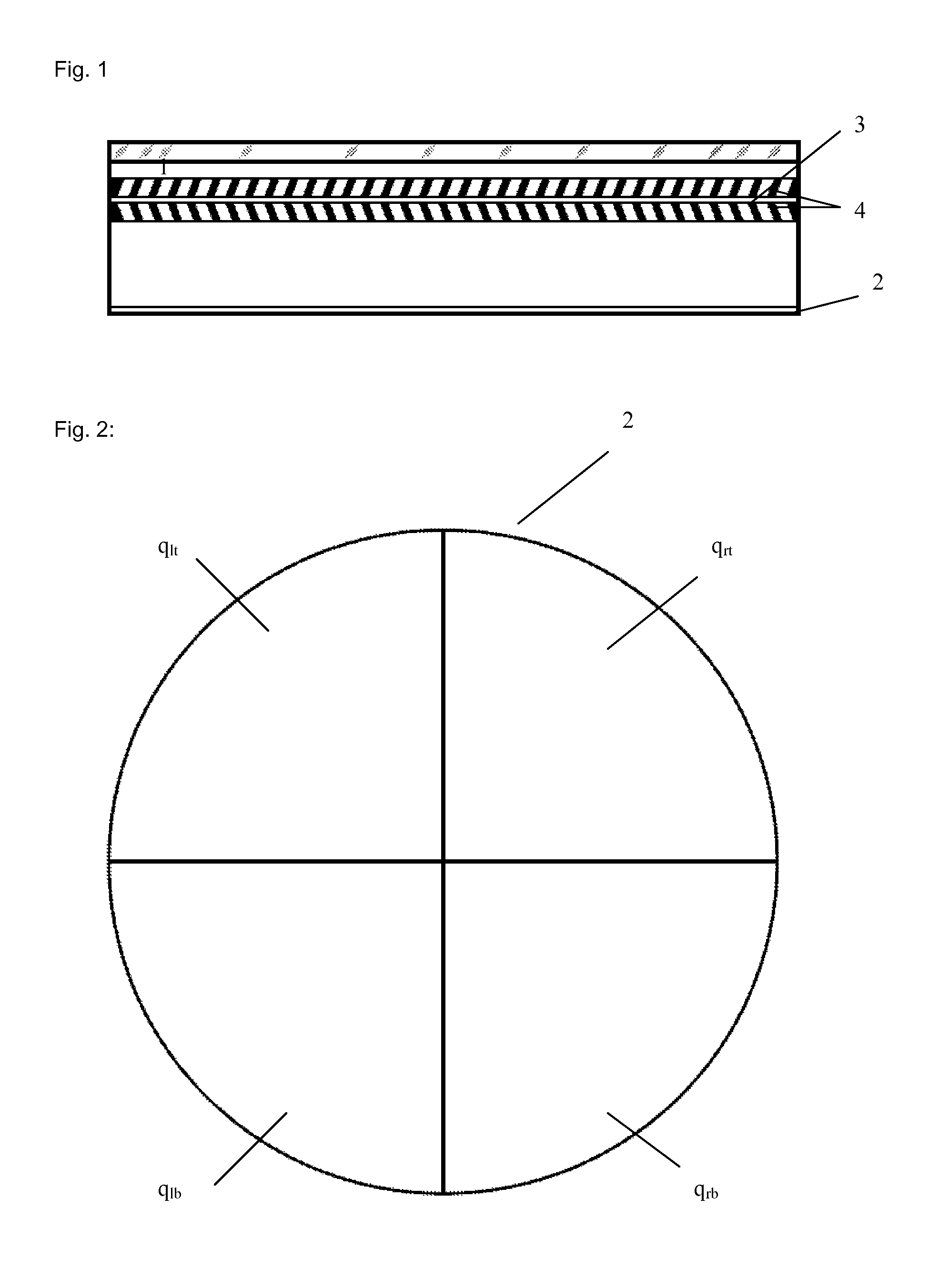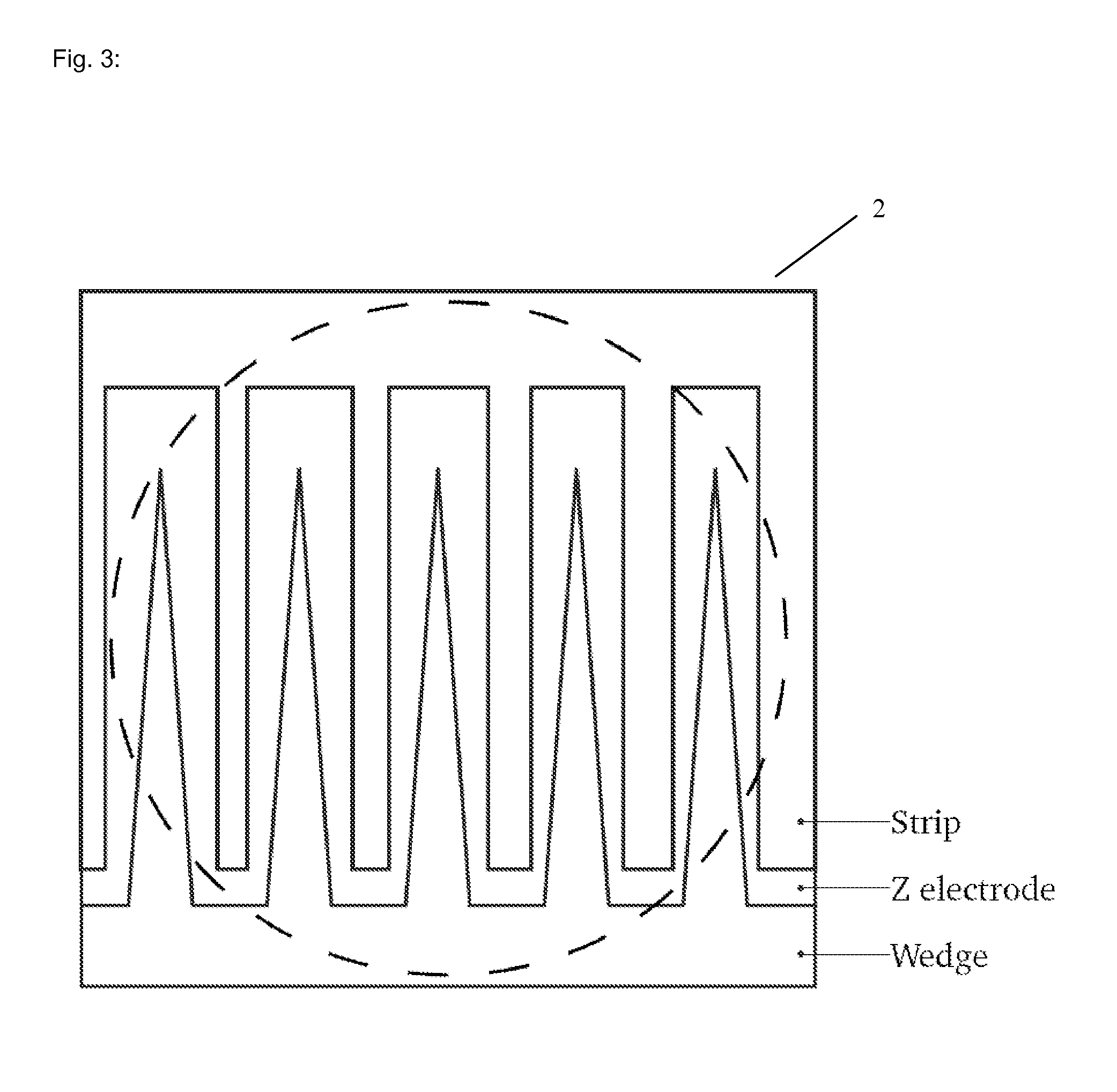Position resolved measurement apparatus and a method for acquiring space coordinates of a quantum beam incident thereon
a quantum beam and measurement apparatus technology, applied in the field of position resolved measurement apparatus and a quantum beam incident thereon acquisition method, can solve the problems of single photon method, small number of electrons that cannot be easily detected nor precisely measured utilizing the current electronic components, and the inability to distinguish single photons, etc., to achieve the improvement of resolution and/or linearity over the field of view of the geometry pattern of different position sensitive detector types, the effect of improving the accuracy of the accuracy of the measurement method
- Summary
- Abstract
- Description
- Claims
- Application Information
AI Technical Summary
Benefits of technology
Problems solved by technology
Method used
Image
Examples
example 1
[0220]An example of the neural network training will now be described with reference to an extended quadrant anode detector system allowing an improvement of the image quality of a quadrant anode.
[0221]First of all, the position sensitive detector is described.
[0222]The classical QA described by Lampton demonstrates high resolution down to the diameter of the individual MCP channel. The two major limitations regarding this anode are the strong non-linearity and the small field of view.
[0223]The present invention provides a simple way to overcome the non-linearity problem by applying the ANN apparatus in combination with the calibration procedure.
[0224]The formulas presented by Lampton rely on the ratio equation that is valid in case of complete charge acquisition. As it was demonstrated by Purschke et al, enlarging the quadrants in combination with expanding the avalanche will result in larger a field of view. To build the vacuum-sealed device, it is technologically preferable to us...
example 2
[0267]Moreover, also decoupled multi-segment anodes can be employed. U.S. Pat. No. 5,686,721 discloses the method for isolating the readout anode system from the high-vacuum internal detector volume. The charge of the avalanche is measured directly on the outer surface of the resistive layer outside the detector. This allows one to easily couple an FSA structure.
[0268]In order to apply the method for the charge-image devices, the anode readout pattern was formed on printed circuit board using standard technology. The charge sensitive amplifiers are connected to the open parts of the board. The same calibration procedure as described above is applied.
[0269]For the five electrodes structure exactly the same neural network configuration was applied to calculate the coordinate as in case of the vacuum-sealed extended QA anode device.
[0270]For a multi-electrode pattern the network configuration has to be changed. Otherwise the increased number of inputs results in a worsening of the trai...
PUM
 Login to View More
Login to View More Abstract
Description
Claims
Application Information
 Login to View More
Login to View More - R&D
- Intellectual Property
- Life Sciences
- Materials
- Tech Scout
- Unparalleled Data Quality
- Higher Quality Content
- 60% Fewer Hallucinations
Browse by: Latest US Patents, China's latest patents, Technical Efficacy Thesaurus, Application Domain, Technology Topic, Popular Technical Reports.
© 2025 PatSnap. All rights reserved.Legal|Privacy policy|Modern Slavery Act Transparency Statement|Sitemap|About US| Contact US: help@patsnap.com



